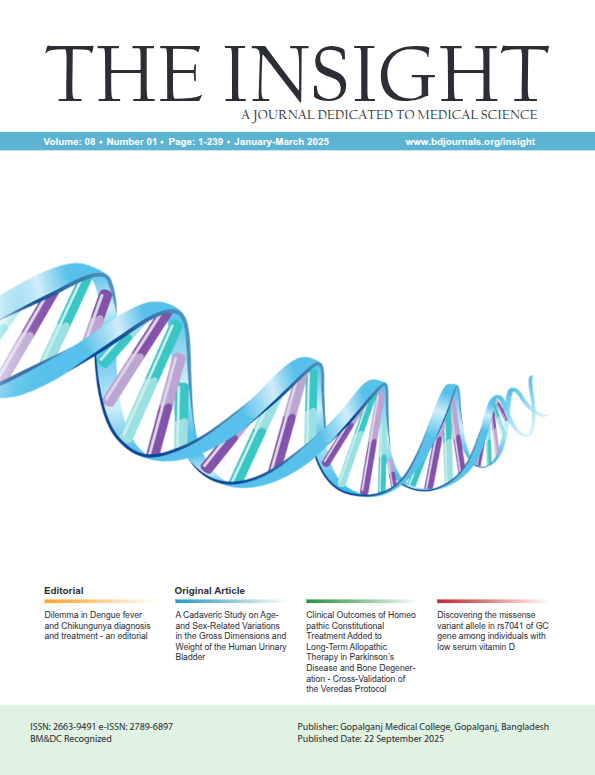Abstract
Background: Urinary tract infections (UTIs) are among the most common bacterial infections in children, associated with diagnostic challenges, recurrence, and the risk of long-term renal complications. Rising antimicrobial resistance further complicates management. Aim of the study: To evaluate the clinical presentations and etiological spectrum of pediatric UTIs and assess their antimicrobial susceptibility patterns in a Bangladeshi tertiary care setting. Methods: A cross-sectional descriptive study was conducted over 12 months on 105 children aged 0–15 years with clinically suspected UTIs and significant bacteriuria. Demographic, clinical, and laboratory data were recorded, and urine cultures were processed using standard microbiological methods. Antimicrobial susceptibility was determined by the Kirby–Bauer disk diffusion method following CLSI guidelines. Result: The highest prevalence was in infants under one year (24.76% males, 18.10% females). Fever with irritability (69.52%) was the most common symptom, followed by vomiting (62.86%) and dysuria with frequency (60.95%). Escherichia coli (65.71%) was the predominant uropathogen, followed by Klebsiella pneumoniae (12.38%). Most isolates showed high sensitivity to carbapenems (85–99%) and piperacillin–tazobactam (85–96%), moderate sensitivity to aminoglycosides and ciprofloxacin, and low sensitivity to third-generation cephalosporins and cotrimoxazole. Conclusion: Pediatric UTIs in this cohort were most common in infancy, with E. coli as the leading pathogen. High resistance to commonly used antibiotics underscores the importance of culture-based diagnosis and local antimicrobial surveillance to guide empirical therapy.

This work is licensed under a Creative Commons Attribution 4.0 International License.
Copyright (c) 2025 The Insight





 PDF
PDF